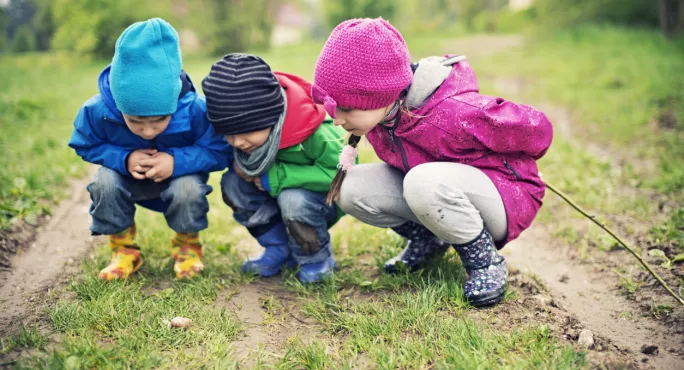From this August three- and four-year-olds and some two-years-olds in Scotland will be entitled to almost double the number of free nursery hours, as the Scottish government invests millions in early learning and childcare.
There are fears, however, that the infrastructure and workforce will not be in place in time for the government to deliver on its promise.
A report published by Audit Scotland in 2018 said the government needed to “urgently finalise and implement plans for changes to the workforce and infrastructure to address the significant risks of not being able to deliver on time”. A follow-up report is due out this spring.
One way around the problem of not having enough buildings, however, is to significantly increase outdoor nursery provision - something the Scottish government recognises, with pilot projects underway.
Creating an outdoor nursery
Now, guidance has been published on how to do this well. Here are some highlights from the report published this week:
- Your outdoor setting may be some children’s first experience of playing freely outside. Give them time and space to adjust at their own pace.
- Consider how families will access the space and if there is public transport. For example, Summerlings Outdoor Nursery in the Highlands has a bothy where children are dropped off and the children then travel to the outdoor nursery site on electric bikes, balance bikes or on foot.
- Forestry and Land Scotland, Scottish Natural Heritage, Historic Environment Scotland and others have recently joined a coalition in support of outdoor play and learning, so will be keen to explore the potential of using their land for outdoor play opportunities.
- Festival trolleys or wagons are usually used to help festival-goers get their alcohol and their tent from car to campsite, but these can also be used by outdoor nurseries to carry equipment, water and first-aid kits
- Teach children not to eat anything outside unless a practitioner tells them it’s safe - no one should eat a mushroom unless they are 100 per cent sure it is edible, fresh and washed.
- Warm water will be needed for handwashing. Health Protection Scotland guidance specifies warm water should be used because it improves comfort and encourages better handwashing, especially in cold weather.
- If there are no utilities or local public toilets, common alternatives include compost toilets, chemical and portable toilets and wild toileting.
- Hammocks and tents can provide cosy spaces for children to sleep and rest in. Tarpaulins erected under the trees can create sheltered areas where children can have circle time, games, stories and lunch.
- Staff should be aware of known mobile phone signal blackspots and have back-up communication plans in place.
- Providing clothing and kit to children “poverty-proofs” outdoor provision, meaning that children from poorer households are not disadvantaged, and gives control over the quality of children’s clothing.




